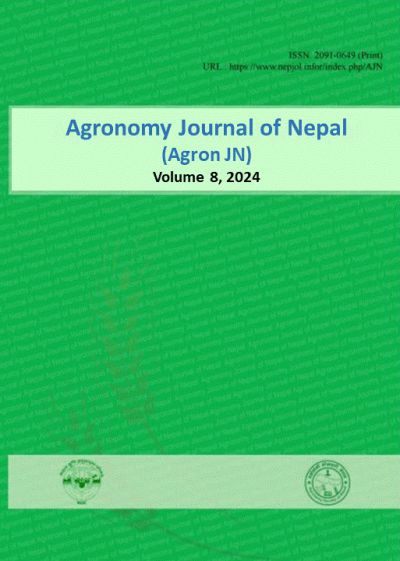Crop Biofortification of Finger Millet Through Agronomic Approaches to Enhance Bioactive Compounds for Human Health and Nutrition
DOI:
https://doi.org/10.3126/ajn.v8i1.70921Keywords:
Bioactive compounds, finger millet, nutrition, health, polyphenolAbstract
Finger millet (Eleusine coracana L.) is a gluten-free cereal crop widely grown in Africa and Asia, recognized for its rich bioactive compounds and health benefits. It contains high levels of polyphenols, flavonoids, and tannins with potent antioxidant properties, which help neutralize free radicals and reduce oxidative damage. These compounds also have anti-inflammatory effects, potentially lowering the risk of chronic diseases like cancer and cardiovascular diseases. Additionally, finger millet is a valuable source of essential minerals such as iron, zinc, calcium and magnesium, crucial for bone health, cognitive function, and body immune. Its high dietary fiber content aids gastrointestinal health, regulates blood sugar and reduces the risk of type 2 diabetes, obesity and heart disease. Finger millet is particularly high in essential amino acids, making it an excellent protein choice for vegetarians. Agronomic biofortification, which involves adding zinc, calcium, and iron to the soil and leaves of plants can increase the mineral content of the grain. This review investigates different approaches of agronomic biofortification of finger millet and explore the health and nutritional benefits of bioactive components with a focus on their role as a functional diet in the prevention and management of chronic diseases.
Downloads
Downloads
Published
How to Cite
Issue
Section
License
Copyright (c) 2024 Agronomy Society of Nepal (ASoN)

This work is licensed under a Creative Commons Attribution-NonCommercial 4.0 International License.
ASON permits for free use, distribution and reproduction in any medium if the original work is properly cited and not used for commercial purposes.




